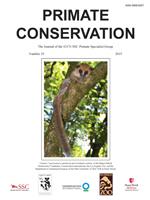The south-central highland region of Madagascar is largely deforested, except for rare, small forest fragments scattered across the landscape. Some of these fragments are now being managed by local community conservation associations, after village residents have seen, first hand, how decades of deforestation and, more recently, climate change in the region have affected their agricultural crops. Furthermore, ecotourism is becoming more common in this area, with the two largest fragments, Anja Community Reserve and the Tsaranoro Valley forest, frequently receiving both Malagasy and foreign visitors. The combination of revenue from such tourism and the prospects of greater food security (by conserving and expanding existing fragments, leading to better soil conditions for nearby crops and rice fields) has resulted in increased fragment preservation over the past few years. We surveyed seven of these fragments in August and September, 2013, with two goals: (1) to evaluate the viability of ring-tailed lemur populations in each fragment in relation to food and water resource availability; and (2) to discuss, with village conservation association leaders, the goals of each association regarding fragment conservation and benefits to local residents. Anja Reserve, operating since 1999, is highly successful, and the association's ecotourism and community development projects have won them national and international recognition. In 2012, village associations Sakaviro Miray, FI.MI.VA Samisorany, and Antokinihoavy-Andranobe received NGO funding to help build a tourism presence in the region, and infrastructure for such activities had begun when we visited these sites in 2013. The Tsaranoro Valley, where three of the fragments are located, is an adventure tourism destination; however, much of the tourism revenue goes to the owners of the trekking camps, although a portion of the funds are donated to the local Association Tantely each year, and these camps also provide jobs for local villagers. Recent efforts are underway to expand these three fragments via reforestation, and to create a corridor between two of them in order to assist with the dispersal of L. catta males, and thus assist with potential population gene flow.
How to translate text using browser tools
1 December 2015
Ring-Tailed Lemurs (Lemur catta), Forest Fragments, and Community-Level Conservation in South-Central Madagascar
L. Gould,
P. Andrianomena

Primate Conservation
Vol. 2015 • No. 29
December 2015
Vol. 2015 • No. 29
December 2015
Community conservation
forest fragments
Lemur catta
south-central Madagascar




